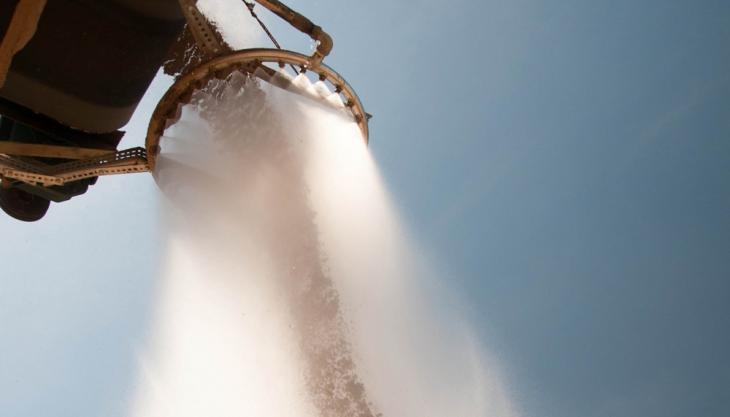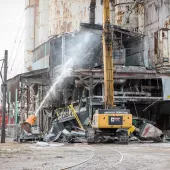Customizable dust suppression for specialized applications

Dust Control Technology introduce bespoke atomized mist solutions to meet individual needs of customers
ILLINOIS-based Dust Control Technology (DCT) have complemented their existing line of stationary dust-suppression rings with the ability to produce geometric shapes, bars or other configurations, providing customers with numerous options in dust and odour suppression.
The customization programme from DCT allows the delivery of atomized mist solutions in bespoke shapes and sizes. Each design option is specially engineered for the application and equipment of the individual customer for superior dust management.
According to DCT, the new technology can offer an unlimited array of shapes and sizes, including the DustBoss DB-R ring, to create a curtain of mist around the cargo stream or specified area for effective containment of fugitive dust or odour.
The customized solution gives high-volume applications, such as radial stackers, crushers and screeners, more focused and reliable suppression, taking the technology beyond perforated hoses and basic spray nozzles. The US company has also developed the ability to supply custom spray bars and shapes under the DustBoss DB-B family of spray bar products.
‘This capability was developed in response to several requests by clients seeking a viable area-specific solution,’ said DCT president Laura Stiverson. ‘We’ve found that the most effective dust-suppression approach involves identifying where in the industrial process fugitive dust is produced and customizing a solution that contains it at the point of emission.’
DCT customers can request a virtual site assessment to determine the optimum size and shape of a customized ring, working with experienced personnel to design a tailored system. The assessment includes: details on material properties and volume; width, length and speed of conveyors; and pulley diameter. DCT can also produce customized shapes from customer drawings, depending on the size, geometry and complexity.
The objective in atomized mist technology for dust suppression is to induce as many collisions as possible between the dust particles and the droplets, causing an agglomeration effect that weighs down the solid particles and drives them to the ground.
At the core of the custom systems, water is pumped into a stainless steel manifold and atomized by a series of specially designed nozzles that fracture the water into a cascading mist. The water can be supplied from standard municipal sources or a hydrant, feeding a hose sized for the application and connected directly to male pipe threads on the manifold. To avoid premature clogging of misting nozzles, facilities that draw from non-potable water sources can employ additional filtration systems.
‘Custom rings and spray bars can be equipped with a pump that is matched to the specific device and the service conditions under which it must operate,’ said Ms Stiverson. ‘Options include a complete plug-and-play system with its own control panel, as well as the ability to tie into a customer’s existing controls. For applications that require surfactants, a dosing pump can be included in the design to precisely meter additives.’
DCT have created custom systems for a variety of different industries, from aggregates to recycling and coal. With the launch of the customization programme, the company says it is equipped to engineer systems of virtually any size and configuration.
Ms Stiverson commented: ‘This product family was created to fulfil unmet customer needs, but it also helps protect workers and the surrounding community from industrial dust and odour. We want all of our customers to have a solution that fits their individual needs, contributing to health and safety, good community relations and regulatory compliance.’







